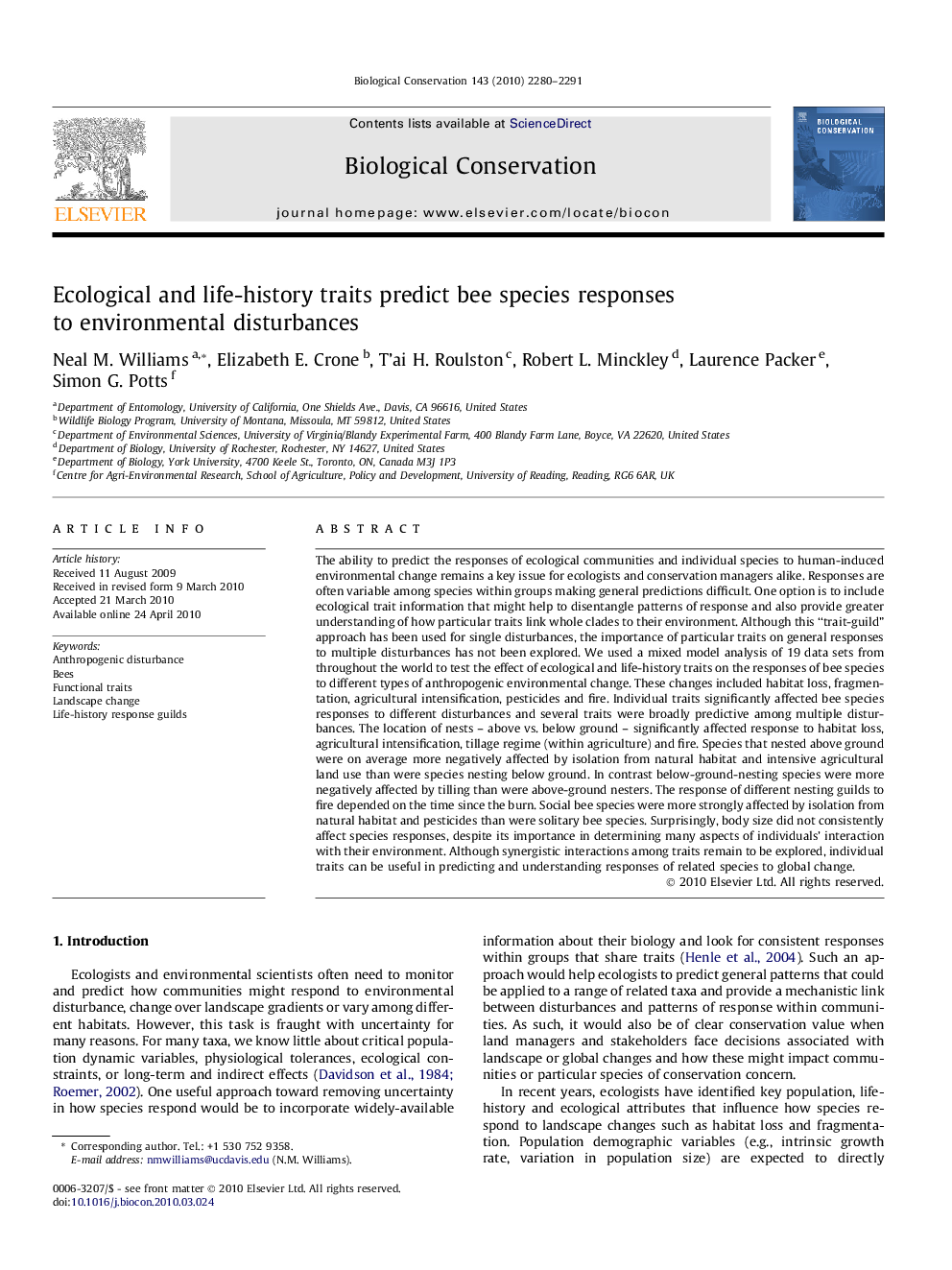| کد مقاله | کد نشریه | سال انتشار | مقاله انگلیسی | نسخه تمام متن |
|---|---|---|---|---|
| 4385894 | 1304552 | 2010 | 12 صفحه PDF | دانلود رایگان |

The ability to predict the responses of ecological communities and individual species to human-induced environmental change remains a key issue for ecologists and conservation managers alike. Responses are often variable among species within groups making general predictions difficult. One option is to include ecological trait information that might help to disentangle patterns of response and also provide greater understanding of how particular traits link whole clades to their environment. Although this “trait-guild” approach has been used for single disturbances, the importance of particular traits on general responses to multiple disturbances has not been explored. We used a mixed model analysis of 19 data sets from throughout the world to test the effect of ecological and life-history traits on the responses of bee species to different types of anthropogenic environmental change. These changes included habitat loss, fragmentation, agricultural intensification, pesticides and fire. Individual traits significantly affected bee species responses to different disturbances and several traits were broadly predictive among multiple disturbances. The location of nests – above vs. below ground – significantly affected response to habitat loss, agricultural intensification, tillage regime (within agriculture) and fire. Species that nested above ground were on average more negatively affected by isolation from natural habitat and intensive agricultural land use than were species nesting below ground. In contrast below-ground-nesting species were more negatively affected by tilling than were above-ground nesters. The response of different nesting guilds to fire depended on the time since the burn. Social bee species were more strongly affected by isolation from natural habitat and pesticides than were solitary bee species. Surprisingly, body size did not consistently affect species responses, despite its importance in determining many aspects of individuals’ interaction with their environment. Although synergistic interactions among traits remain to be explored, individual traits can be useful in predicting and understanding responses of related species to global change.
Journal: Biological Conservation - Volume 143, Issue 10, October 2010, Pages 2280–2291